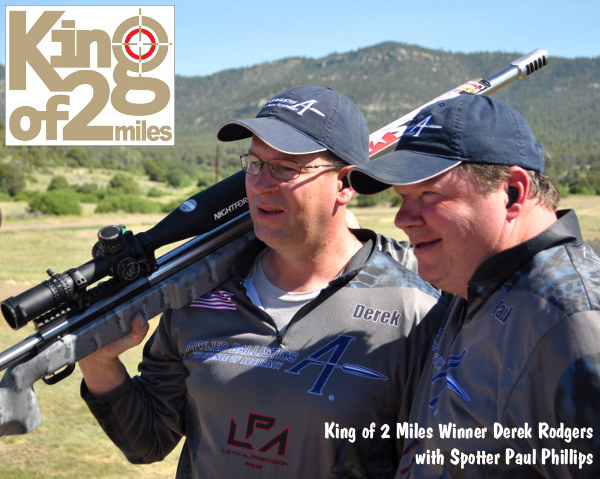Weakside Bolt Placement Benefits for Benchrest and F-Class

Most bolt-action rifle shooters work the bolt with their trigger-pulling hand. This is because most rifles sold to right-handed shooters come with right-side bolts, while “lefty” rifles come with left-side bolts. This “standard” configuration requires the shooter to take his dominant, trigger-pulling hand off the stock to cycle the bolt, then re-position his hand on the stock, and “re-claim” the trigger. Often the shooter must lift or move his head to work the bolt, and that also requires him to re-establish his cheek weld after each and every shot. Not good.
This really doesn’t make much sense for precision shooting with fore-end support*. There is a better way. If you leave your trigger hand in position and work the bolt (and feed rounds) with the opposite hand, then you don’t need to shift grip and head position with each shot. All this requires is a weakside-placed bolt, i.e. a left bolt for a right-handed shooter or a right bolt for a left-handed shooter. The video below shows a “Lefty” working a right bolt. Note how efficient this is:
As our friend Boyd Allen explains: “If you think about it, if you are going to work with a factory action where your options are left bolt and left port or right bolt and right port, and you are building a rifle that will only be shot from a rest, using the left/left for a RH shooter or using a right/right for a LH shooter works better than the conventional configuration”.
Shoot Like a Champ and Work the Bolt with Your Weakside Hand
Derek Rodgers is a recent F-TR World Champion, a King of 2 Miles champion, AND is the only person to have won BOTH the U.S. F-Open and the U.S. F-TR National Championships.
And guess what? Derek runs this kind of “opposite” bolt set-up. Yep, Derek shoots right-handed with a left bolt. Though Derek is a right-hander, he shoots with a Left Bolt/Left Port (LBLP) action. He pulls the trigger with his right index finger, while working the left-side bolt with his left (weakside) hand. This allows him to stay in position, and maintain his cheekweld. He places his right hand on the grip, while manipulating the bolt (and feeding rounds) with his non-trigger-pulling hand.
Past F-TR World Champion and Past King of 2 Miles Derek Rodgers

This is the rifle with which Derek won the 2013 F-TR National Championship.

*For true standing, off-hand shooting (whether in competition or on a hunt), a conventional strongside bolt placement makes sense, since the non-dominant arm must support the front of the rifle all the time. When shooting from bipod or rest, it’s a different story.
Similar Posts:
- Benefits of Weakside Bolt Placement — For F-Class and Benchrest
- Weakside Bolt Placement — When and Why It Works
- Bolt Configuration: The Benefits of Weakside Bolt Placement
- Weakside Bolt Placement — The Competitive Advantages
- Switch Your Bolt Side and Shoot Better from Prone and Bench
Tags: Bolt, Derek Rodgers, LBLP, Prone Shooting, RBRP, Reverse Bolt Placement, Weakside


















While I disagree YMMV.
I’m right-handed and prefer to shoot a RBLPRE setup (Right bolt, Left port, Right eject). I shoot short-range benchrest (both RF and CF) with no contact on the gun other than my trigger finger.
In fact, one of my BR rifles uses off-set scope rings to help keep my cheek off the stock. Shooting free recoil means the bullet has left the barrel before the butt touches my shoulder.
Like I said, YMMV. Use what works for you!
Many years ago a shooting buddy got me into sporter class CF bench rest shooting using a rifle of his. I’m right handed and he was left handed, as was the rifle he had me use. For me, shooting a left handed rifle right handed in BR competition was a natural.
Im right handed but I just bought a LH rifle and have been shooting it right handed nothing to it and it’s left eject so I feed in with left hand I kinda like it…not bad at all